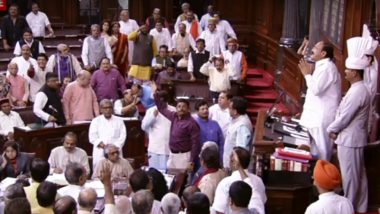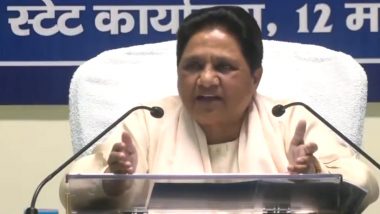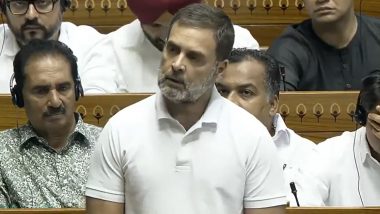New Delhi, June 8: The Rajya Sabha biennial elections, which were deferred in March due to the coronavirus outbreak in India and subsequent lockdown, will now be held on June 19. A total of 24 Rajya Sabha seats are up for grab. The results will be declared on June 19. The ruling Bharatiya Janata Party (BJP) and the Congress are in a tight content in Gujarat, Madhya Pradesh and Karnataka. Presently, the BJP has 75 members and Congress 39 in the upper house of Parliament. Rajya Sabha Elections 2020: Gujarat Congress Shifts 65 MLAs to Resorts As Eight Legislators Resign from the Party.
The total strength of the Rajya Sabha is 245. Of them, 233 members are elected by the legislatures of the states and union territories and remaining 12 are appointed by the President of India. The Election Commission had issued a notification on March 6 for filling 55 Rajya Sabha seats. On 38 seats, candidates got elected unopposed. The elections for the remaining 18 seats were postponed due to the COVID-19 induced lockdown. HD Devegowda Likely to File Nomination for Rajya Sabha Election on June 9.
On June 1, the Election Commission decided to hold polls for the remaining 18 seats, announcing polls for six additional seats whose members will be retiring either in June or July, taking the total number of seats to 24. Of the 24 outstanding seats, Andhra Pradesh, Gujarat and Karnataka account for four each, Madhya Pradesh and Rajasthan three each, Jharkhand two and Manipur, Meghalaya, Arunachal Pradesh and Mizoram one each.
In Madhya Pradesh, the BJP and Congress are fighting for the third seat. Similarly, Gujarat has four seats, while a total of five people are in the race, three on behalf of the BJP and two as the nominees of the opposition Congress. The BJP is working hard to pick up three seats, leaving only one for the Congress. Congress' prospects are marred by recent resignations of its four legislators.
How Rajya Sabha Elections Are Held And Voting Takes Place:
While Lok Sabha members are elected directly by the voters, Rajya Sabha members are elected indirectly by state legislators. How many Rajya Sabha members a state can send depends on its population. Every Rajya Sabha MP has a tenure of six years and elections to one-third seats are held every two years. Voting by state legislators for Rajya Sabha nominees is called proportional representation with the single transferable vote (STV) system.
Under the STV system, each MLA's vote is counted only once. If the state has more than one seat, MLAs don’t vote for each seat. They have to give their order of preference for each candidate, marking 1,2,3… against their names. Suppose a state has three Rajya Sabha seats. Let’s say Party A has 100 MLAs and Party B 40. Both parties can field three candidates each for the three Rajya Sabha seats.
Now, to make it through, a candidate should get a certain number of votes. In this case, the total number of MLAs (140) is multiplied by 100 because each MLA’s vote is deemed to have a value of 100. This number is divided by the number of vacancies (3) plus 1. The formula simply is [(Number of MLAs X 100) / (Vacancies + 1)] + 1. That brings us to 3,500. This total number is added to 1. Since each MLA has 100 votes, a candidate would, in this case, need 3,501 votes or the backing of 36 MLAs to win.
(The above story first appeared on LatestLY on Jun 08, 2020 01:05 PM IST. For more news and updates on politics, world, sports, entertainment and lifestyle, log on to our website latestly.com).













 Quickly
Quickly




















